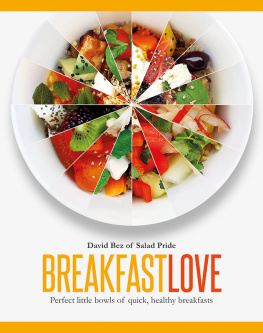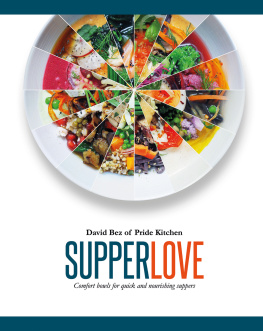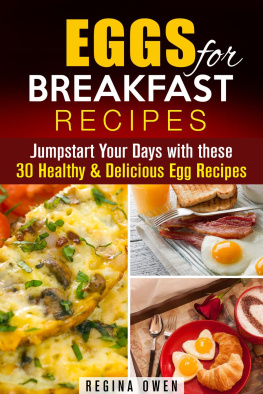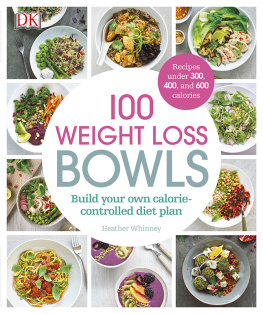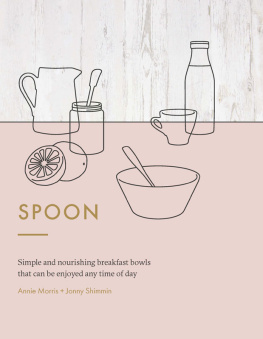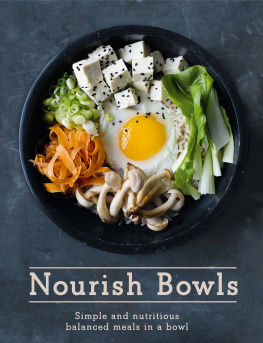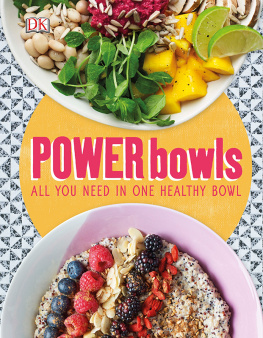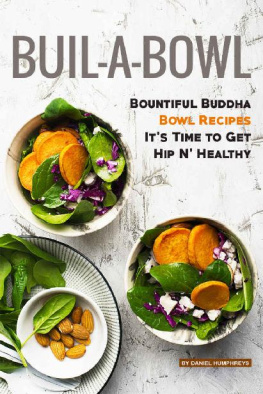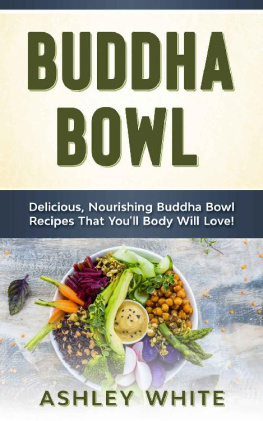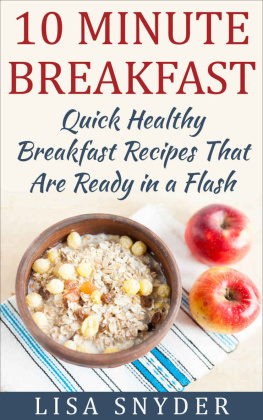


This book is dedicated to my mum, my wife and my son. Publishing Director: Sarah Lavelle Creative Director: Helen Lewis Senior Editor: Cline Hughes Designer and Photographer: David Bez Production: Tom Moore, Vincent Smith First published in 2016 by Quadrille Publishing Pentagon House 5254 Southwark Street London SE1 1UN www.quadrille.co.uk Quadrille is an imprint of Hardie Grant www.hardiegrant.com.au Text 2016 David Bez Photography 2016 David Bez, except photographs on 2016 Michele Turriani Design and layout 2016 Quadrille Publishing The rights of the author have been asserted. All rights reserved. No part of this book shall be reproduced, stored in a retrieval system, or transmitted by any means electronic, mechanical, photocopying, recording, or otherwise without written permission from the publisher. Cataloguing in Publication Data: a catalogue record for this book is available from the British Library. eISBN: 978 184949 811 1 10 9 8 7 6 5 4 3 2 1 Contents How often do we eat breakfast, not really thinking about it properly? Looking back on the breakfasts Ive eaten throughout my life, I had milk and cookies up to the age of 15, then cappuccino and croissants until just a couple of years ago.
After re-thinking how to have lunch in the workplace a few years ago and launching my first book, Salad Love, I thought it was important to apply the same principles and attitude to whats commonly considered the most important meal of the day. A good breakfast propels you towards the day and the challenges ahead. Ive asked many nutritionists and read many books and articles about what constitutes the best and healthiest breakfast. Ive taken that research and, as always, Ive gone through my own journey, experimenting on myself, my body and my palate, every day for a good two years. During this time, Ive learned that the food you eat needs to be tantalizing and colourful in order to appeal to your eyes and your imagination. This is Rule Number One.
Rule Number Two is to try to use ingredients that are unrefined or as close to their natural state as possible. Thats why I say no to industrial granolas, flavoured yogurts and overly-processed cereals. I sometimes use cereals, including cornflakes, but I always try to buy the gluten-free and sugar-free versions, and those that are high in fibre. Ive always been very reticent about eating fruit dont ask me why! Ive probably just been lazy about needing to wash or peel them and therefore Ive tended to go for an easier, ready-to-eat carb/sugary option. But on my mission to re-educate myself about breakfast, I forced myself to rediscover fruits, one by one, and its been great. I love them so much now; how could I have gone without them for so long!

I made it my mission to uncover whats generally considered healthy, what the current top nutritionists believe (which might change in a few years), and I tried to create a common sense, or common ground, that feels true and right and not just trendy.
I also decided to see what various cultures around the world eat for breakfast and I tried to adapt it to my tastes and my culture. I made the decision to explore vegetables and savoury plates in my breakfast, too. From my Italian point of view, breakfast is a sweet affair, but I was surprised to discover that not only do the British have a big tradition of savoury breakfast in the form of fry-ups, but in Asia, South America, Africa, Germany and other parts of Europe there are also plenty of examples of savoury breakfast. Another basic rule for me is speed. This is not a book about long and luscious Sunday brunches. This book is about everyday breakfasts: easy and quick to prepare at home or even in the kitchen of your office.
There is some pre-prepared stuff (e.g. soaked nuts, seeds and oats, cooked rice and a few blended ingredients), but a little DIY makes things interesting! Often all it takes is a few moments of preparation the night before and by the time you wake up the next morning, youre ready to put your breakfast bowl together. The truth is that a lot of the breakfast products you buy in the supermarket are over-processed and full of sugar. Mostly, Ive always asked the same question about my meals, and breakfast is no exception. Does it taste good? Is it healthy (in a common-sense way)? Does it feel good? Is it easy to make? Is it satisfying? Is it light? Does it weigh you down, or does it fuel and nurture your morning? Does it look good? I hope I have answered most of them. Enjoy the journey.
When composing my breakfast, I divide it into different layers: fruit and/or vegetables, cereals, proteins, extra toppings and some kind of liquid or dressing. These are the main ingredients, but as you will see, I often mess around with the formula. Its really up to you to choose what you want to put in it and to enjoy what you are eating. Fruits and vegetables The biggest part of my breakfast is the fruit and veg. At least two fruit or veg portions not cereals make up the base of my breakfast bowl. This is a big change from conventional breakfasts, in which a big bowl of porridge might be topped with a couple of strawberries.
Instead, I have a big dose of fruits and veggies accompanied by some protein and a bit of cereal. Cereals, grains and seeds Cereals like oats, cornflakes and quinoa are still part of my diet, but in a much smaller proportion compared to the past. I use around cup of (if possible) gluten-free and sugar-free grains. Protein You might like to add some protein to your bowl, such as ham, beef or chicken; eggs, fish, yogurt, cheese or tofu; lentils, quinoa, nuts or seeds depending on your dietary requirements and your taste. Toppings Extra toppings can boost the flavours and colours of your breakfast bowl. Try fresh herbs, edible flowers, bee pollen or dried fruits (but no more than a teaspoon of those).
Dressing Then, to top it all off, is the dressing, or the creamy/liquid part of your breakfast. This can range from juices to dairy and non-dairy milks. There is a fine balance between all the ingredients; their sweetness or sourness, the size of the pieces, the juiciness of the fruit and vegetables, the crunchiness of the cereals and the nuts, the smoothness and the richness of the dressing. Fruits and vegetables should make up more than half of your breakfast, not just because you should eat at least five portions a day to get a range of vitamins, minerals and fibres, but because they are tasty, filling and full of colour. I favour bigger pieces of fruit over finely chopped ones, so that I can make out every single ingredient properly. For similar reasons, I prefer to keep my fruits raw, as the flavours are more intense that way and the nutritional values are higher.
I do, however, occasionally like to add dried fruit, which Ill talk about more on . The first half of the book is the sweet chapter in which fruits are the heroes, but youll also spot some fruits in the savoury chapter. There are usually at least four recipes for each of these lovely fruits: apple, apricot, avocado, banana, blueberries, blackberries, cherries, coconut, fig, grape, grapefruit, kiwi, lychee, mango, melon, nectarine, orange, clementine, papaya, passion fruit, physalis, pear, persimmon, pineapple, plum, pomegranate, raspberries, strawberries and watermelon. Ive explored every single fruit thoroughly, every day for at least a week, to make sure that I find the best flavour combinations. As a result, Ive fallen in love with fruit again. Its sweet, juicy, flavourful and so good for me!

